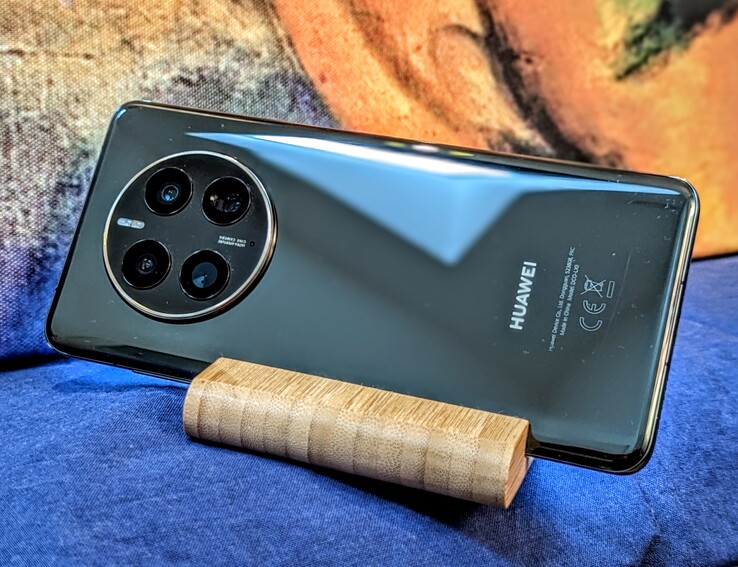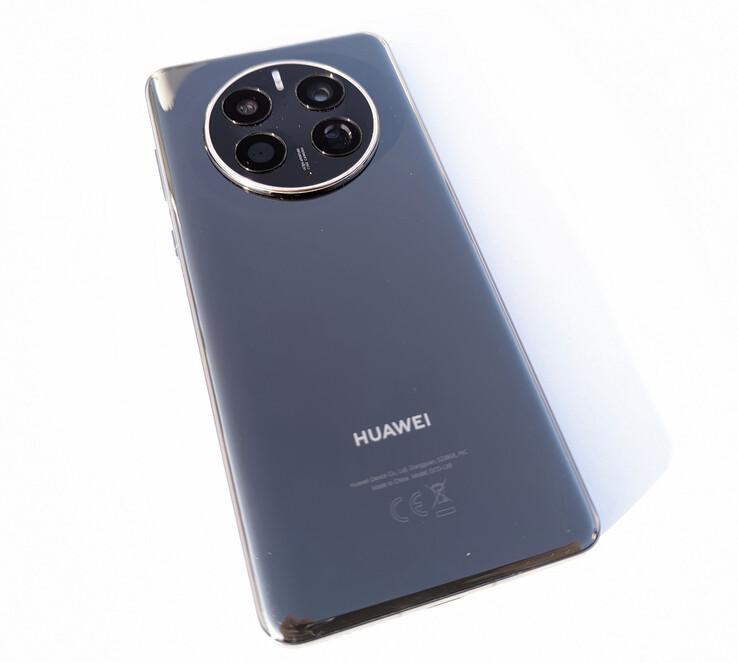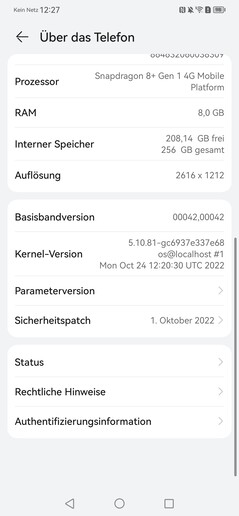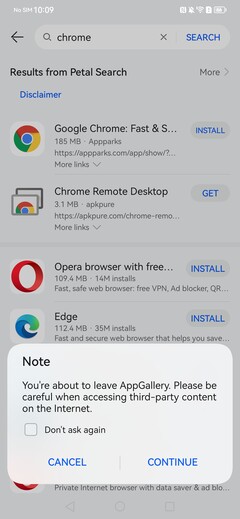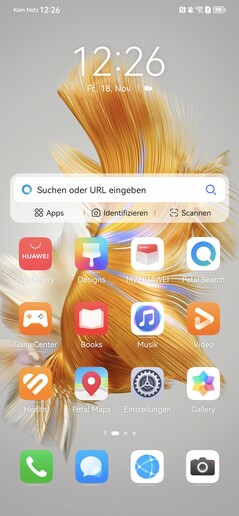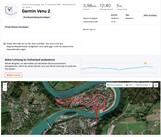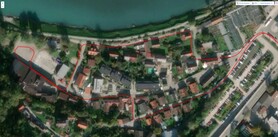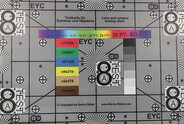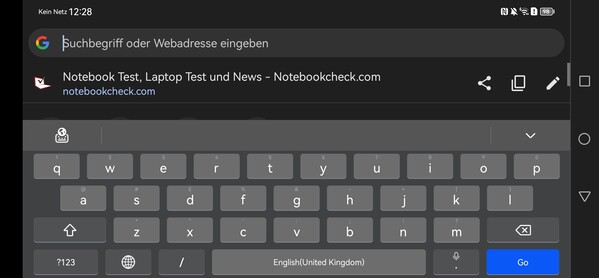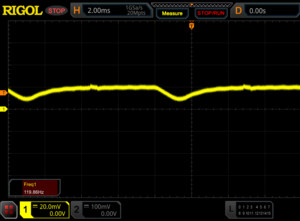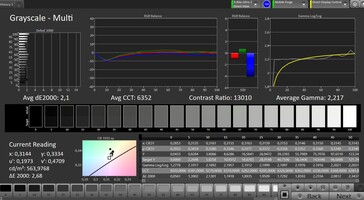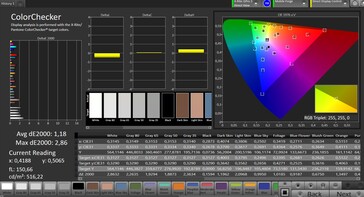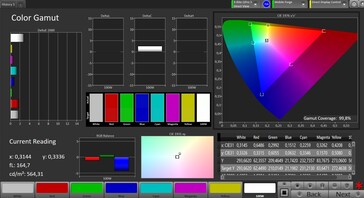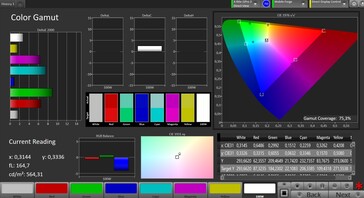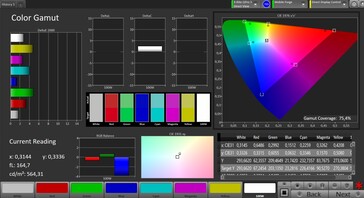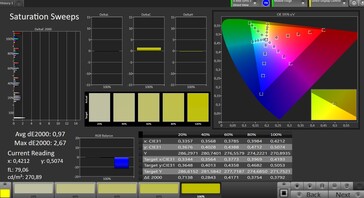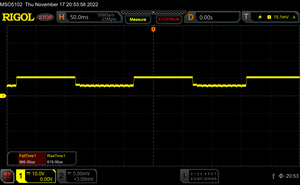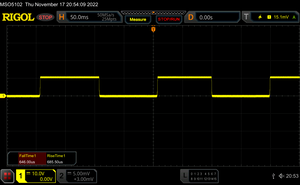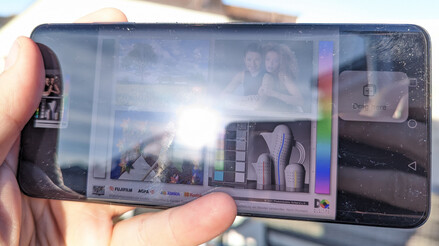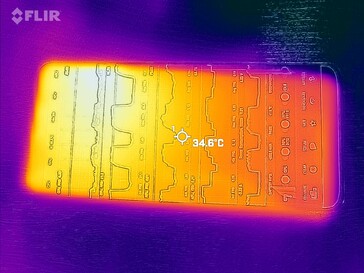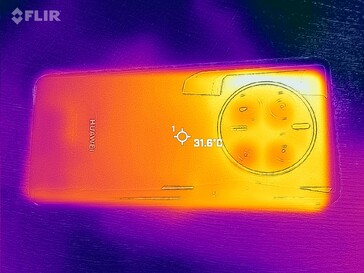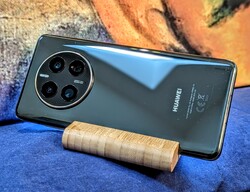华为Mate 50 Pro智能手机评论。相机明星有问题
多年来,华为一直在提供神奇的相机智能手机。然而,这家中国制造商多年来也被切断了与谷歌的服务联系,并试图通过华为移动服务建立自己的生态系统。事实上,许多制造商正在将他们的应用程序移植到该平台上,但要让这些应用程序运行,往往需要某些技巧。特别是当涉及到来自谷歌的流行应用程序时,有时根本无法运行。
当然,这些并不是华为Mate 50 Pro的最佳前提条件,它的报价约为1200美元--并不完全便宜。但华为声称提供了很多回报:创新的相机,具有可变光圈,可实现自然的虚化效果,高质量的光学变焦,以及相机外的良好设备和材料质量。此外,该公司已经放弃了其麒麟芯片,现在使用高通SoC。
那么,什么占主导地位:对有限的软件感到沮丧,还是对高质量的手机感到高兴?在下面的评论中可以找到答案。
潜在的竞争对手比较
Rating | Date | Model | Weight | Drive | Size | Resolution | Price |
|---|---|---|---|---|---|---|---|
| 88.9 % v7 (old) | 11 / 2022 | Huawei Mate 50 Pro SD 8+ Gen 1, Adreno 730 | 209 g | 256 GB UFS 3.1 Flash | 6.70" | 2616x1212 | |
| 90.6 % v7 (old) | 11 / 2020 | Huawei Mate 40 Pro Kirin 9000, Mali-G78 MP24 | 212 g | 256 GB UFS 3.1 Flash | 6.76" | 2772x1344 | |
| 89.4 % v7 (old) | 03 / 2022 | Samsung Galaxy S22 Ultra 5G Exynos 2200, Xclipse 920 | 228 g | 128 GB UFS 3.1 Flash | 6.80" | 3088x1440 | |
| 90.3 % v7 (old) | 03 / 2023 | Apple iPhone 14 Pro Max A16, A16 GPU 5-Core | 240 g | 128 GB NVMe | 6.70" | 2796x1290 | |
| 89.2 % v7 (old) | 08 / 2021 | Xiaomi Mi 11 Ultra SD 888 5G, Adreno 660 | 234 g | 256 GB UFS 3.1 Flash | 6.81" | 3200x1440 | |
| 87 % v7 (old) | 08 / 2022 | OnePlus 10T SD 8+ Gen 1, Adreno 730 | 203.5 g | 256 GB UFS 3.1 Flash | 6.70" | 2412x1080 |
机箱 - 玻璃和铝制的高级机箱
» Notebookcheck多媒体笔记本电脑Top 10排名
» Notebookcheck游戏笔记本电脑Top 10排名
» Notebookcheck低价办公/商务笔记本电脑Top 10排名
» Notebookcheck高端办公/商务笔记本电脑Top 10排名
» Notebookcheck工作站笔记本电脑Top 10排名
» Notebookcheck亚笔记本电脑Top 10排名
» Notebookcheck超级本产品Top 10排名
» Notebookcheck变形本产品Top 10排名
» Notebookcheck平板电脑Top 10排名
» Notebookcheck智能手机Top 10排名
» Notebookcheck评测过最出色的笔记本电脑屏幕
» Notebookcheck售价500欧元以下笔记本电脑Top 10排名
» Notebookcheck售价300欧元以下笔记本电脑Top 10排名
华为真的不能被指责在外壳上吝啬。Mate 50 Pro采用了高质量的金属和玻璃,所有元素都融合得天衣无缝。 这款智能手机通过了IP68认证,即防尘防水,并能承受压力和扭曲。
华为的Mate 50 Pro拥有黑色或银色的光面玻璃背面,上部区域有大而圆的相机模块,不仅看起来很别致,而且拿着时感觉很好,很平衡,在桌子上不会晃动。然而,这款手机非常容易沾染指纹,所以要保持其高质量的外观,就必须经常清洁。
屏幕和背面由华为的昆仑玻璃保护,据说这种玻璃特别耐摔。
设备--自己的存储卡格式
欧洲只提供华为Mate 50 Pro的一个配置版本。对于8GB内存和256GB大容量存储,华为要价1199欧元。其他国家也有512GB存储的版本。
至少,华为赋予USB-C端口稍快的传输速度,即USB-C 3.1 Gen.1,速度高达5GBit/s。DisplayPort信号也可以通过USB-C端口输出,这样智能手机就可以直接连接到显示器上。
你还可以再次期待一个红外线端口,它可以用来直接用智能手机控制电视。用于移动支付服务的NFC已经上岗,但由于缺少服务,谷歌支付无法使用。华为正在推广自己的替代方案--Huawei Pay,但这在德国和奥地利不能通过NFC使用,而是通过供应商Bluecode的条形码,只在选定的零售商那里接受。
没有microSD卡,而只支持华为自己的NM卡格式。虽然它们和nano-SIM卡一样紧凑,但目前只有少数供应商,而且这些卡的最大容量为256GB。你也可以在SIM卡托盘中插入两张SIM卡来代替。还支持eSIM。
软件--应用程序的限制
华为的软件是基于Android 的开源部分,因此谷歌操作系统的长期用户不需要进行完全的重新调整。然而,如前所述,谷歌服务是缺失的,例如,谷歌服务将智能手机的位置功能与应用程序联系起来,或提供注册选项,因此Android 应用程序必须由开发人员进行相应的调整,以便与华为的服务一起工作。
因此,并非所有的应用程序都能在华为Mate 50 Pro上使用;尤其是谷歌的应用程序通常无法使用。Chrome浏览器开始工作,但很快就抱怨缺少组件。许多东西似乎是即兴的,这可能会让没有经验的用户望而却步,比如华为的应用库在安装时警告我们,我们正在从一个可能不安全的第三方供应商那里下载一个应用。
如果你买了一个要求通过制造商的应用程序链接的设备,你应该事先检查它是否也与智能手机兼容。尽管华为表示90%的最流行的应用程序都可以使用,但它自己的替代品,如花瓣地图,通常都很好用,而且应用程序库也在不断改进。当然,当你需要的一个应用程序缺失时,这是很恼人的。
华为预装了许多广告应用和游戏,或者提供了通过主屏幕上的图标下载它们的可能性。因此,如果你想要一个干净的系统,你必须做一些整理工作。
在欧洲的第一个月里,该设备收到了两个更新。在审查时,安全补丁是2022年10月初的,因此是相当最新的。制造商承诺至少有两次操作系统更新和三年的安全补丁,这通常是标准的。
DRM L1是可用的,因此可以全质量地享受流媒体内容。
通信和GNSS - 旗舰手机中只有4G
有点恼人的是,华为Mate 50 Pro不支持WiFi 6E:尽管支持目前最快的WLAN标准的路由器仍然非常少,但正如我们的测试所显示的,它可以带来显著的速度优势。
所以你必须满足于WiFi 6。虽然这不足以成为WLAN速度方面的佼佼者,但在与我们的华硕ROG Rapture AXE11000参考路由器的测试中,Mate 50 Pro还是实现了约950MBit/s的非常稳固的速率。
由于美国对华为的贸易限制,Mate 50 Pro只是一款4G手机,这对2022年的旗舰手机来说是一个相当大的缺陷。至少,这款智能手机涵盖了全球4G网络上所有必要的功能频率,并在我们的测试中提供了非常好的信号强度。
在中国,华为的Mate系列提供了一个功能,Apple 也为其最新一代设备引入了这个功能。如果没有手机网络,但必须进行紧急呼叫,智能手机可以回落到北斗卫星网络。这意味着,在偏远地区也可以进行通信。
| Networking | |
| iperf3 receive AXE11000 | |
| OnePlus 10T | |
| Huawei Mate 50 Pro | |
| Average of class Smartphone (52 - 1857, n=181, last 2 years) | |
| Apple iPhone 14 Pro Max | |
| Samsung Galaxy S22 Ultra 5G | |
| iperf3 transmit AXE11000 | |
| Huawei Mate 50 Pro | |
| OnePlus 10T | |
| Apple iPhone 14 Pro Max | |
| Average of class Smartphone (49.8 - 1828, n=181, last 2 years) | |
| Samsung Galaxy S22 Ultra 5G | |
| iperf3 transmit AXE11000 6GHz | |
| Samsung Galaxy S22 Ultra 5G | |
| Average of class Smartphone (508 - 1945, n=95, last 2 years) | |
| iperf3 receive AXE11000 6GHz | |
| Samsung Galaxy S22 Ultra 5G | |
| Average of class Smartphone (451 - 1870, n=95, last 2 years) | |
| iperf3 transmit AX12 | |
| Huawei Mate 40 Pro | |
| Xiaomi Mi 11 Ultra | |
| iperf3 receive AX12 | |
| Huawei Mate 40 Pro | |
| Xiaomi Mi 11 Ultra | |
电话和语音质量 - 清晰易懂
华为的标准电话和联系人应用程序已预装在设备上。我们也能够通过apk下载谷歌的标准应用,并顺利使用,尽管他们抱怨说设备不支持。
这款智能手机的语音质量非常好。听筒可以变得非常响亮,这就是为什么附近的人可能会听到我们的对话伙伴在说什么。无论是在设备上打电话,还是在免提通话时,扬声器的声音也能清晰传送。然而,人们不应说话太轻,否则麦克风可能无法接收我们的声音。
相机 - 锐度、变焦和虚化都令人印象深刻
华为已经停止了与徕卡的长期合作,现在推出的华为Mate 50 Pro没有这个著名品牌的名字。与前代产品相比,背面的相机设置已被完全修改 华为Mate 40 Pro.
这包括一个具有可变光圈的5000万像素主摄像头和一个光学图像稳定器。为了实现更高的光输出,图像通常以1250万像素拍摄,但也有可能使用全分辨率。
这款相机拍摄的照片非常漂亮,主要的主体清晰显示,背景略微模糊。在环境照片中,可以看到很多细节,尽管是多云天气,但色彩还原度仍然很好。即使在烛光下,华为Mate 50 Pro仍能拍出具有大量细节和光线充足区域的好照片,而Honor Magic4 Pro在这里显示出稍多的动态效果。
在潜望镜相机的帮助下,真正的光学变焦是可能的。图像处理器从主摄像头和变焦镜头的同步照片中渲染出最终图像,因此,即使在较远的距离,照片也相当清晰。
视频可以以4K分辨率和60FPS的速度录制。然而,考虑到价格范围,没有选项可以录制8K的电影。尽管如此,华为Mate 50 Pro生产的移动图像质量非常好。在录制过程中,超广角和主摄像头之间的混合变焦也是可能的。
在前面,有一个1300万像素的自拍相机。它可以非常清晰地显示人脸,但在黑暗区域可以做得更有活力。
Image comparison
Choose a scene and navigate within the first image. One click changes the position on touchscreens. One click on the zoomed-in image opens the original in a new window. The first image shows the scaled photograph of the test device.
Main camera - flowerMain camera - environmentMain camera - low lightWide angle camera作为一项特殊的创新,华为Mate 50 Pro在主摄像头中集成了一个物理存在的可变光圈,目的是为了确保背景的柔和和精确的模糊效果。
我们将虚化效果与其他强摄像头的智能手机进行比较,发现Mate 50 Pro实际上做得非常好。聚焦的一品红显示得非常清晰,而背景的模糊程度并不高,这使得植物非常突出。由于采用了可变光圈,虚化效果的强度甚至可以调节。
镜头 Honor Magic4 Pro也做得很好,而谷歌Pixel 7 Pro的数字生成的虚化效果则是 谷歌Pixel 7 Pro显得过于夸张,也不太准确。
Mate 50 Pro在实验室条件下也能拍出非常清晰的照片,在只有1勒克斯的情况下也能很好地照亮拍摄对象。
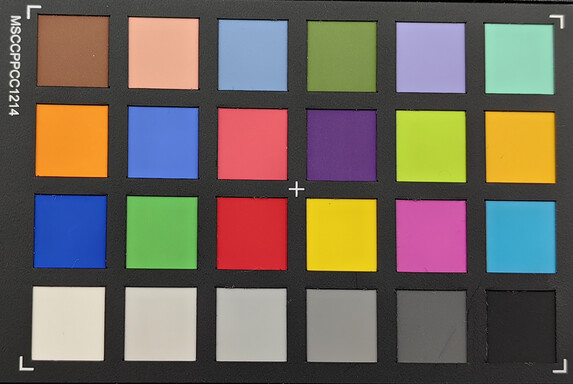
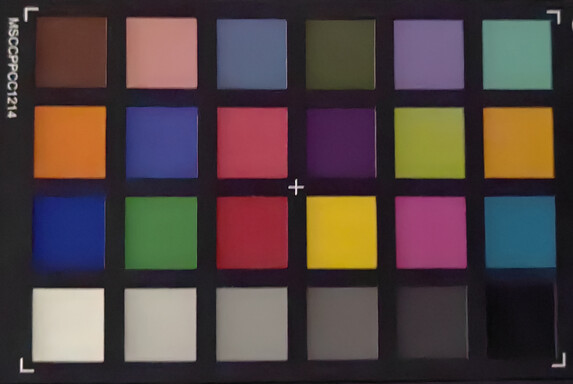
配件和保修 - 几乎没有任何官方配件可以购买
华为在智能手机的盒子里装了一包像样的配件:包括一个66瓦的充电器、一条USB线、一个硅胶保险杠和一个SIM卡工具。显示屏前贴有保护膜。
华为在德国为其手机提供24个月的保修。这在其他国家可能有所不同,所以购买前一定要向供应商咨询。
输入设备和操作 - 准确的面部识别
显示屏 - 华为采用非常明亮的AMOLED屏幕
Mate 50 Pro的AMOLED屏幕为2,616 x 1,212像素,与这个价格范围内的其他手机相比,像素略少。另一方面,肉眼看不到这种差异,内容显示仍然非常清晰。
在我们用分光光度计的测试中,我们测得平均亮度为944.8cd/m²。这是一个很好的值,但它不能完全跟上S22 Ultra的最高值。 Galaxy S22 Ultra或 iPhone 14 Pro Max。不过,对于HDR播放来说,这已经足够了。
| |||||||||||||||||||||||||
Brightness Distribution: 92 %
Center on Battery: 940 cd/m²
Contrast: ∞:1 (Black: 0 cd/m²)
ΔE ColorChecker Calman: 1.18 | ∀{0.5-29.43 Ø4.78}
ΔE Greyscale Calman: 2.1 | ∀{0.09-98 Ø5}
99.8% sRGB (Calman 2D)
Gamma: 2.217
CCT: 6352 K
| Huawei Mate 50 Pro AMOLED, 2616x1212, 6.7" | Huawei Mate 40 Pro OLED, 2772x1344, 6.8" | Samsung Galaxy S22 Ultra 5G Dynamic AMOLED, 3088x1440, 6.8" | Apple iPhone 14 Pro Max Super Retina XDR OLED, 2796x1290, 6.7" | Xiaomi Mi 11 Ultra AMOLED, 3200x1440, 6.8" | OnePlus 10T Fluid AMOLED, 2412x1080, 6.7" | |
|---|---|---|---|---|---|---|
| Screen | -15% | 17% | 7% | -9% | -31% | |
| Brightness middle (cd/m²) | 940 | 778 -17% | 1077 15% | 1061 13% | 891 -5% | 861 -8% |
| Brightness (cd/m²) | 945 | 782 -17% | 1093 16% | 1057 12% | 888 -6% | 856 -9% |
| Brightness Distribution (%) | 92 | 95 3% | 97 5% | 99 8% | 99 8% | 97 5% |
| Black Level * (cd/m²) | ||||||
| Colorchecker dE 2000 * | 1.18 | 1.4 -19% | 1.2 -2% | 1.3 -10% | 1.9 -61% | 2.27 -92% |
| Colorchecker dE 2000 max. * | 2.86 | 3.5 -22% | 2 30% | 3.1 -8% | 3.7 -29% | 4.17 -46% |
| Greyscale dE 2000 * | 2.1 | 2.5 -19% | 1.3 38% | 1.6 24% | 1.3 38% | 2.9 -38% |
| Gamma | 2.217 99% | 2.22 99% | 2.37 93% | 2.19 100% | 2.3 96% | 2.303 96% |
| CCT | 6352 102% | 6530 100% | 6526 100% | 6511 100% | 6527 100% | 6141 106% |
* ... smaller is better
Screen Flickering / PWM (Pulse-Width Modulation)
| Screen flickering / PWM detected | 119.9 Hz | ||
The display backlight flickers at 119.9 Hz (worst case, e.g., utilizing PWM) . The frequency of 119.9 Hz is very low, so the flickering may cause eyestrain and headaches after extended use. In comparison: 53 % of all tested devices do not use PWM to dim the display. If PWM was detected, an average of 8111 (minimum: 5 - maximum: 343500) Hz was measured. | |||
在固定的变焦水平和不同的亮度设置下进行的一系列测量
Display Response Times
| ↔ Response Time Black to White | ||
|---|---|---|
| 1.6 ms ... rise ↗ and fall ↘ combined | ↗ 1 ms rise | |
| ↘ 0.6 ms fall | ||
| The screen shows very fast response rates in our tests and should be very well suited for fast-paced gaming. In comparison, all tested devices range from 0.1 (minimum) to 240 (maximum) ms. » 8 % of all devices are better. This means that the measured response time is better than the average of all tested devices (20.2 ms). | ||
| ↔ Response Time 50% Grey to 80% Grey | ||
| 1.3 ms ... rise ↗ and fall ↘ combined | ↗ 0.6 ms rise | |
| ↘ 0.7 ms fall | ||
| The screen shows very fast response rates in our tests and should be very well suited for fast-paced gaming. In comparison, all tested devices range from 0.165 (minimum) to 636 (maximum) ms. » 5 % of all devices are better. This means that the measured response time is better than the average of all tested devices (31.6 ms). | ||
性能 - 现在采用高通SoC
华为为Mate 50 Pro的SoC准备了一个小惊喜。这款智能手机没有使用内部的麒麟处理器,由于贸易限制,华为不得不停止生产该处理器。相反,华为现在使用的是高通Snapdragon 8+ Gen 1,这是目前市场上最强大的SoC之一。
华为Mate 50 Pro不能完全跟上新iPhone的步伐,但它确实在竞争性Android 设备的基准测试中占据了第一位。在日常使用中,这足以实现流畅的操作,即使是在性能非常密集的应用程序中。
| UL Procyon AI Inference for Android - Overall Score NNAPI | |
| Average Qualcomm Snapdragon 8+ Gen 1 (3291 - 84787, n=21) | |
| Average of class Smartphone (3769 - 81594, n=139, last 2 years) | |
| Huawei Mate 40 Pro | |
| OnePlus 10T | |
| Samsung Galaxy S22 Ultra 5G | |
| Huawei Mate 50 Pro | |
| AImark - Score v2.x | |
| Xiaomi Mi 11 Ultra | |
| Apple iPhone 14 Pro Max | |
| OnePlus 10T | |
| Average Qualcomm Snapdragon 8+ Gen 1 (1043 - 7865, n=11) | |
| Samsung Galaxy S22 Ultra 5G | |
| Huawei Mate 50 Pro | |
在图形性能方面,Mate 50 Pro也能跟上市场上最快的设备,所以它也能很好地连接显示器和图形要求高的应用程序。有趣的是,在较简单的基准测试中,屏幕上的帧率也达到了60帧以上,但在更复杂的测试中,智能手机锁定在60帧。
GFXBench (DX / GLBenchmark) 2.7: T-Rex Onscreen | 1920x1080 T-Rex Offscreen
GFXBench 3.0: on screen Manhattan Onscreen OGL | 1920x1080 1080p Manhattan Offscreen
GFXBench 3.1: on screen Manhattan ES 3.1 Onscreen | 1920x1080 Manhattan ES 3.1 Offscreen
GFXBench: on screen Car Chase Onscreen | 1920x1080 Car Chase Offscreen | on screen Aztec Ruins High Tier Onscreen | 2560x1440 Aztec Ruins High Tier Offscreen | on screen Aztec Ruins Normal Tier Onscreen | 1920x1080 Aztec Ruins Normal Tier Offscreen
| 3DMark / Wild Life Extreme Unlimited | |
| Apple iPhone 14 Pro Max | |
| OnePlus 10T | |
| Huawei Mate 50 Pro | |
| Samsung Galaxy S22 Ultra 5G | |
| Xiaomi Mi 11 Ultra | |
| 3DMark / Wild Life Extreme | |
| Apple iPhone 14 Pro Max | |
| OnePlus 10T | |
| Huawei Mate 50 Pro | |
| Samsung Galaxy S22 Ultra 5G | |
| Xiaomi Mi 11 Ultra | |
| 3DMark / Wild Life Unlimited Score | |
| Apple iPhone 14 Pro Max | |
| Huawei Mate 50 Pro | |
| OnePlus 10T | |
| Samsung Galaxy S22 Ultra 5G | |
| Huawei Mate 40 Pro | |
| Xiaomi Mi 11 Ultra | |
| GFXBench (DX / GLBenchmark) 2.7 / T-Rex Onscreen | |
| Xiaomi Mi 11 Ultra | |
| Samsung Galaxy S22 Ultra 5G | |
| OnePlus 10T | |
| Apple iPhone 14 Pro Max | |
| Huawei Mate 50 Pro | |
| GFXBench (DX / GLBenchmark) 2.7 / T-Rex Offscreen | |
| Apple iPhone 14 Pro Max | |
| Huawei Mate 50 Pro | |
| OnePlus 10T | |
| Samsung Galaxy S22 Ultra 5G | |
| Xiaomi Mi 11 Ultra | |
| GFXBench 3.0 / Manhattan Onscreen OGL | |
| Samsung Galaxy S22 Ultra 5G | |
| Xiaomi Mi 11 Ultra | |
| OnePlus 10T | |
| Apple iPhone 14 Pro Max | |
| Huawei Mate 50 Pro | |
| GFXBench 3.0 / 1080p Manhattan Offscreen | |
| Apple iPhone 14 Pro Max | |
| Huawei Mate 50 Pro | |
| OnePlus 10T | |
| Samsung Galaxy S22 Ultra 5G | |
| Xiaomi Mi 11 Ultra | |
| GFXBench 3.1 / Manhattan ES 3.1 Onscreen | |
| Samsung Galaxy S22 Ultra 5G | |
| Xiaomi Mi 11 Ultra | |
| OnePlus 10T | |
| Apple iPhone 14 Pro Max | |
| Huawei Mate 50 Pro | |
| GFXBench 3.1 / Manhattan ES 3.1 Offscreen | |
| Apple iPhone 14 Pro Max | |
| Huawei Mate 50 Pro | |
| OnePlus 10T | |
| Samsung Galaxy S22 Ultra 5G | |
| Xiaomi Mi 11 Ultra | |
| GFXBench / Car Chase Onscreen | |
| OnePlus 10T | |
| Apple iPhone 14 Pro Max | |
| Huawei Mate 50 Pro | |
| Samsung Galaxy S22 Ultra 5G | |
| Xiaomi Mi 11 Ultra | |
| GFXBench / Car Chase Offscreen | |
| OnePlus 10T | |
| Huawei Mate 50 Pro | |
| Apple iPhone 14 Pro Max | |
| Xiaomi Mi 11 Ultra | |
| Samsung Galaxy S22 Ultra 5G | |
| GFXBench / Aztec Ruins High Tier Onscreen | |
| OnePlus 10T | |
| Apple iPhone 14 Pro Max | |
| Huawei Mate 50 Pro | |
| Samsung Galaxy S22 Ultra 5G | |
| Xiaomi Mi 11 Ultra | |
| GFXBench / Aztec Ruins High Tier Offscreen | |
| Huawei Mate 50 Pro | |
| OnePlus 10T | |
| Apple iPhone 14 Pro Max | |
| Xiaomi Mi 11 Ultra | |
| Samsung Galaxy S22 Ultra 5G | |
| GFXBench / Aztec Ruins Normal Tier Onscreen | |
| Huawei Mate 50 Pro | |
| OnePlus 10T | |
| Apple iPhone 14 Pro Max | |
| Xiaomi Mi 11 Ultra | |
| Samsung Galaxy S22 Ultra 5G | |
| GFXBench / Aztec Ruins Normal Tier Offscreen | |
| Apple iPhone 14 Pro Max | |
| OnePlus 10T | |
| Huawei Mate 50 Pro | |
| Xiaomi Mi 11 Ultra | |
| Samsung Galaxy S22 Ultra 5G | |
Mate 50 Pro在浏览器基准测试中失败了,在某些情况下甚至比前代产品更慢。这在浏览网页时也很明显。虽然网页加载相对较快,但其他智能手机在滚动时立即显示图像,但在华为的智能手机上你必须等待更长时间。
| Jetstream 2 - 2.0 Total Score | |
| Apple iPhone 14 Pro Max (Safari 16) | |
| Average of class Smartphone (23.8 - 387, n=153, last 2 years) | |
| Average Qualcomm Snapdragon 8+ Gen 1 (76.2 - 204, n=23) | |
| Samsung Galaxy S22 Ultra 5G (Chrome 99) | |
| Xiaomi Mi 11 Ultra (Chrome91) | |
| OnePlus 10T (Chrome 104) | |
| Huawei Mate 40 Pro (Huawei Browser 11) | |
| Huawei Mate 50 Pro (Chrome 107) | |
| Speedometer 2.0 - Result 2.0 | |
| Apple iPhone 14 Pro Max (Safari 16) | |
| Average of class Smartphone (15.2 - 643, n=126, last 2 years) | |
| Average Qualcomm Snapdragon 8+ Gen 1 (69.1 - 196, n=18) | |
| Samsung Galaxy S22 Ultra 5G (Chrome 99) | |
| Xiaomi Mi 11 Ultra (Chrome91) | |
| OnePlus 10T (Chrome 104) | |
| Huawei Mate 40 Pro (Huawei Browser 11) | |
| Huawei Mate 50 Pro (Chome 107) | |
| WebXPRT 4 - Overall | |
| Apple iPhone 14 Pro Max (Safari 16) | |
| Average of class Smartphone (27 - 306, n=149, last 2 years) | |
| Average Qualcomm Snapdragon 8+ Gen 1 (69 - 159, n=21) | |
| OnePlus 10T | |
| Huawei Mate 50 Pro (Chrome 107) | |
| WebXPRT 3 - Overall | |
| Apple iPhone 14 Pro Max (Safari 16) | |
| Average of class Smartphone (38 - 380, n=34, last 2 years) | |
| Average Qualcomm Snapdragon 8+ Gen 1 (106 - 224, n=14) | |
| Huawei Mate 40 Pro (Huawei Browser 11) | |
| Xiaomi Mi 11 Ultra (Chrome91) | |
| Samsung Galaxy S22 Ultra 5G (Chrome 99) | |
| Huawei Mate 50 Pro (Chrome 107) | |
| OnePlus 10T (Chrome 104) | |
| Octane V2 - Total Score | |
| Apple iPhone 14 Pro Max (Safari 16) | |
| Average of class Smartphone (2228 - 121337, n=201, last 2 years) | |
| Average Qualcomm Snapdragon 8+ Gen 1 (17622 - 61536, n=24) | |
| OnePlus 10T (Chrome 104) | |
| Samsung Galaxy S22 Ultra 5G (Chrome 99) | |
| Xiaomi Mi 11 Ultra (Chrome91) | |
| Huawei Mate 40 Pro (Huawei Browser 11) | |
| Huawei Mate 50 Pro (Chrome 107) | |
| Mozilla Kraken 1.1 - Total | |
| Xiaomi Mi 11 Ultra (Chrome91) | |
| Huawei Mate 50 Pro (Chrome 107) | |
| Huawei Mate 40 Pro (Huawei Browser 11) | |
| OnePlus 10T (Chrome 104) | |
| Samsung Galaxy S22 Ultra 5G (Chrome 99) | |
| Average of class Smartphone (257 - 28190, n=156, last 2 years) | |
| Average Qualcomm Snapdragon 8+ Gen 1 (665 - 1707, n=22) | |
| Apple iPhone 14 Pro Max (Safari 16) | |
* ... smaller is better
有了UFS 3.1存储,华为Mate 50 Pro就能跟上时代。前代产品仍能更快地传输数据,但快速的存储使系统整体上更加流畅。
| Huawei Mate 50 Pro | Huawei Mate 40 Pro | Samsung Galaxy S22 Ultra 5G | Xiaomi Mi 11 Ultra | OnePlus 10T | Average 256 GB UFS 3.1 Flash | Average of class Smartphone | |
|---|---|---|---|---|---|---|---|
| AndroBench 3-5 | 5% | -7% | -13% | -31% | -3% | 20% | |
| Sequential Read 256KB (MB/s) | 1835.8 | 2037 11% | 1653 -10% | 1928 5% | 1568.37 -15% | 1757 ? -4% | 2216 ? 21% |
| Sequential Write 256KB (MB/s) | 1104.8 | 1321 20% | 1074 -3% | 756 -32% | 847.69 -23% | 1204 ? 9% | 1837 ? 66% |
| Random Read 4KB (MB/s) | 263.4 | 325 23% | 322.3 22% | 259.3 -2% | 173.45 -34% | 287 ? 9% | 294 ? 12% |
| Random Write 4KB (MB/s) | 423.6 | 277.6 -34% | 273.1 -36% | 329.7 -22% | 211.24 -50% | 318 ? -25% | 334 ? -21% |
游戏--甚至可以在高设置下进行
不幸的是,无论是GameBench和其他帧率跟踪器都拒绝在华为Mate 50 Pro上工作。因此,我们不能提供具体的帧率,而只能提供我们对游戏的印象。
我们对《PUBG移动版》、《暗黑破坏神不朽》和其他游戏进行了一些测试运行,从未出现过任何问题。你经常可以选择最大的图形设置,如《PUBG》中的 "UltraHD "或《暗黑破坏神》中的 "Very High",而游戏仍然运行得非常流畅。
通过精确的触摸屏和微调的传感器进行的游戏控制也运行得非常流畅。
排放--热舞
温度
在负载下,华为智能手机的温度明显上升到45.1℃。
与前代产品一样,Mate 50 Pro在长时间的负载下保持性能也有问题。在3DMark压力测试中,我们看到在第一次运行时,经过几次测试,性能明显下降到几乎60%,甚至低于40%。
(-) The maximum temperature on the upper side is 45.1 °C / 113 F, compared to the average of 35.2 °C / 95 F, ranging from 21.9 to 247 °C for the class Smartphone.
(±) The bottom heats up to a maximum of 41.2 °C / 106 F, compared to the average of 34 °C / 93 F
(+) In idle usage, the average temperature for the upper side is 31 °C / 88 F, compared to the device average of 32.9 °C / 91 F.
3DMark Wild Life Stress Test
| 3DMark | |
| Wild Life Stress Test Stability | |
| OnePlus 10T | |
| Xiaomi Mi 11 Ultra | |
| Apple iPhone 14 Pro Max | |
| Samsung Galaxy S22 Ultra 5G | |
| Huawei Mate 40 Pro | |
| Huawei Mate 50 Pro | |
| Wild Life Extreme Stress Test | |
| Xiaomi Mi 11 Ultra | |
| Apple iPhone 14 Pro Max | |
| Samsung Galaxy S22 Ultra 5G | |
| Huawei Mate 50 Pro | |
| OnePlus 10T | |
发言人
Mate 50 Pro在底部边缘使用了一个完整的扬声器,手机的听筒也用于支持。因此,在横向模式下也可以实现立体声效果。声音一般,相当清晰,很适合音乐播放,即使缺乏低音,几乎所有的智能手机都是如此。
外部音频设备也可以通过蓝牙或USB-C连接。这一点没有问题,但尽管有高通SoC,华为手机上没有aptX编解码器,所以你必须用AAC、SBC和LDAC来做。
Huawei Mate 50 Pro audio analysis
(±) | speaker loudness is average but good (79.5 dB)
Bass 100 - 315 Hz
(-) | nearly no bass - on average 15.1% lower than median
(±) | linearity of bass is average (11% delta to prev. frequency)
Mids 400 - 2000 Hz
(+) | balanced mids - only 3.9% away from median
(+) | mids are linear (4.8% delta to prev. frequency)
Highs 2 - 16 kHz
(+) | balanced highs - only 4.4% away from median
(+) | highs are linear (6% delta to prev. frequency)
Overall 100 - 16.000 Hz
(±) | linearity of overall sound is average (15.8% difference to median)
Compared to same class
» 4% of all tested devices in this class were better, 4% similar, 92% worse
» The best had a delta of 11%, average was 35%, worst was 134%
Compared to all devices tested
» 23% of all tested devices were better, 5% similar, 71% worse
» The best had a delta of 4%, average was 24%, worst was 134%
OnePlus 10T audio analysis
(+) | speakers can play relatively loud (84 dB)
Bass 100 - 315 Hz
(-) | nearly no bass - on average 68.4% lower than median
(+) | bass is linear (0% delta to prev. frequency)
Mids 400 - 2000 Hz
(-) | nearly no mids - on average 68.4% lower than median
(+) | mids are linear (0% delta to prev. frequency)
Highs 2 - 16 kHz
(-) | nearly no highs - on average 68.4% lower than median
(+) | highs are linear (0% delta to prev. frequency)
Overall 100 - 16.000 Hz
(-) | overall sound is not linear (124.4% difference to median)
Compared to same class
» 94% of all tested devices in this class were better, 5% similar, 1% worse
» The best had a delta of 11%, average was 35%, worst was 134%
Compared to all devices tested
» 98% of all tested devices were better, 2% similar, 0% worse
» The best had a delta of 4%, average was 24%, worst was 134%
电池寿命 - 快速充电技术
消耗功率
在能源消耗方面,Mate 50 Pro总体上是平均水平,即使负载消耗明显高于前代产品。
这款智能手机的最大充电功率为66瓦,交货范围中包括适当的电源适配器。电池从完全空载到充满的充电时间明显少于2小时。无线充电的功率最高可达50瓦。目前,只有40瓦的无线充电器在华为的德国商店有售,其价格略低于130欧元。
其他设备,如TWS耳机,可以通过反向充电,把它们放在智能手机上,以高达5瓦的功率进行无线充电。
| Off / Standby | |
| Idle | |
| Load |
|
Key:
min: | |
| Huawei Mate 50 Pro 4700 mAh | Huawei Mate 40 Pro 4400 mAh | Samsung Galaxy S22 Ultra 5G 5000 mAh | Apple iPhone 14 Pro Max 4323 mAh | Xiaomi Mi 11 Ultra 5000 mAh | OnePlus 10T 4800 mAh | Average Qualcomm Snapdragon 8+ Gen 1 | Average of class Smartphone | |
|---|---|---|---|---|---|---|---|---|
| Power Consumption | 3% | 20% | 21% | 0% | 31% | -1% | 0% | |
| Idle Minimum * (Watt) | 1.2 | 1.01 16% | 0.58 52% | 0.61 49% | 1.13 6% | 0.8 33% | 1.006 ? 16% | 0.848 ? 29% |
| Idle Average * (Watt) | 1.5 | 2.12 -41% | 0.71 53% | 1.7 -13% | 1.67 -11% | 1.2 20% | 1.834 ? -22% | 1.434 ? 4% |
| Idle Maximum * (Watt) | 1.7 | 2.15 -26% | 1.16 32% | 1.73 -2% | 1.69 1% | 1.3 24% | 1.984 ? -17% | 1.618 ? 5% |
| Load Average * (Watt) | 6.5 | 3.94 39% | 7.07 -9% | 3.85 41% | 5.17 20% | 3.5 46% | 5.68 ? 13% | 7.01 ? -8% |
| Load Maximum * (Watt) | 8.7 | 6.53 25% | 11.32 -30% | 5.94 32% | 9.9 -14% | 5.9 32% | 8.44 ? 3% | 11.3 ? -30% |
* ... smaller is better
Power consumption: Geekbench (150 cd/m²)
Power consumption: GFXBench (150 cd/m²)
电池寿命
电池容量为4700毫安时,比Mate 40 Pro略高。Mate 40 Pro.这也反映在运行时间上,平均约长16%。在我们的Wi-Fi测试中,略低于12小时的时间是很稳固的,但与其他顶级手机相比,它最多只能排在中场。
Mate 50 Pro绝对能让你度过工作日,但是否足够应付第二天的工作取决于使用强度。如果电池水平下降到1%,智能手机可以激活紧急模式,该模式非常节能,你仍然可以在12分钟内打电话或保持3小时的待机状态。
| Huawei Mate 50 Pro 4700 mAh | Huawei Mate 40 Pro 4400 mAh | Samsung Galaxy S22 Ultra 5G 5000 mAh | Apple iPhone 14 Pro Max 4323 mAh | Xiaomi Mi 11 Ultra 5000 mAh | OnePlus 10T 4800 mAh | |
|---|---|---|---|---|---|---|
| Battery runtime | -16% | 16% | 55% | -16% | 19% | |
| Reader / Idle (h) | 29.2 | 20.9 -28% | 32.9 13% | 57.9 98% | 18.5 -37% | 29.9 2% |
| H.264 (h) | 19 | 16.7 -12% | 18 -5% | 28.1 48% | 16.8 -12% | 27.4 44% |
| WiFi v1.3 (h) | 12 | 10.2 -15% | 14.1 18% | 15.8 32% | 10.8 -10% | 14.3 19% |
| Load (h) | 4.9 | 4.5 -8% | 6.8 39% | 6.9 41% | 4.6 -6% | 5.5 12% |
Pros
Cons
结论 - 仅适用于专业人士
华为Mate 50 Pro的缺点是不能使用谷歌的服务或安装5G技术。这些对西方用户来说是艰难的限制。
因此,许多潜在买家可能会从一开始就立即排除这款智能手机,并且永远无法看到潜望镜相机和可变光圈所能带来的清晰变焦照片和柔和虚化效果。另一个负面的观点是在长时间的负载下严重的节流现象。
另一方面,外壳的制造质量无可指责,即使光洁的设备上可见的指纹很快让我们感到不安。在这里,如果也能获得在亚洲销售的仿皮版本,那就更好了。明亮的屏幕、快速的内存、出色的扬声器和良好的语音质量使该智能手机处于良好状态。
然而,很难毫无保留地推荐华为Mate 50 Pro。由于应用兼容性降低,日常使用的局限性太大,而且如果没有5G,这款昂贵的智能手机的未来性就会受到威胁。因此,在西方,这款智能手机太贵了,不能被视为真正的替代品。
华为Mate 50 Pro的相机提供了令人印象深刻的技术,但软件和5G方面许多不幸的限制使日常使用变得困难。
华为的许多技术被前子公司Honor ,当该公司被剥离时采用。该 Honor Magic4 Pro也是一款伟大的相机智能手机,也能毫无问题地使用谷歌应用程序和5G。这款 谷歌Pixel 7 Pro也能拍出好照片,而且价格非常有吸引力。
价格和可用性
Huawei Mate 50 Pro
- 11/18/2022 v7 (old)
Florian Schmitt




